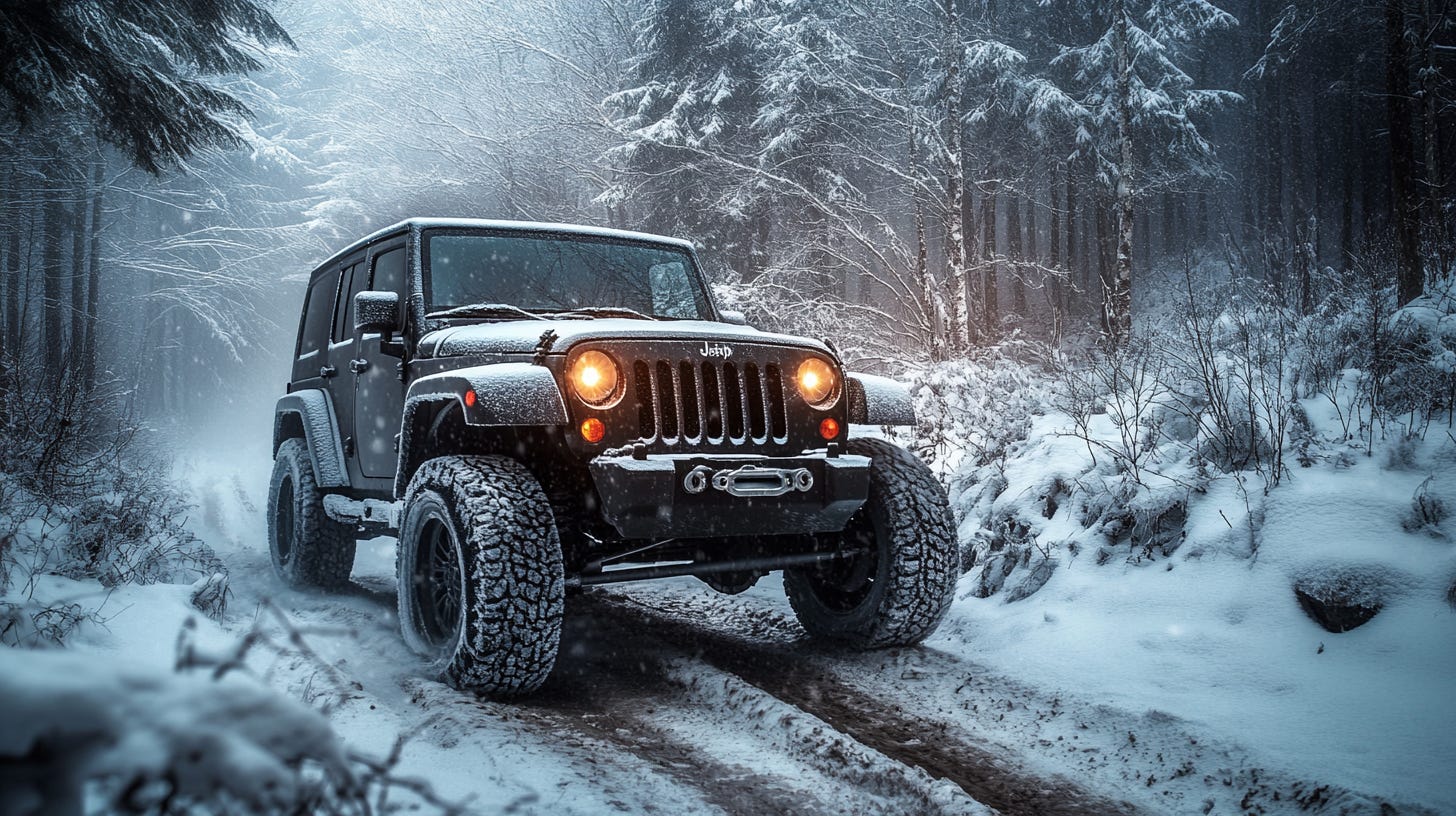Preparing Your 4x4 for Winter Off-Roading: Essential Tips and Gear

Winter off-roading brings unique challenges and thrilling adventures, but preparing your 4x4 for harsh weather is crucial to ensuring a safe and successful ride. With colder temperatures, increased precipitation, and slick, muddy terrains, a few essential preparations can make all the difference. Here’s your guide to outfitting your 4x4 for winter off-roading and handling whatever nature throws your way.
1. Winterizing Your 4x4 Vehicle
Winterizing your vehicle before setting out is key to performance and longevity.
- Check Fluids and Battery: Cold weather can thicken engine fluids and strain the battery. Ensure your coolant, oil, and windshield washer fluids are winter-grade. Check your battery for proper voltage and inspect it for any corrosion, which could lead to failure in the cold.
- Upgrade to Winter Tires: Winter or all-terrain tires with a solid grip are non-negotiable. These tires handle snow, ice, and mud effectively, offering better traction. Keep an eye on tire pressure as it fluctuates with temperature changes; under-inflated tires can reduce control on icy or wet surfaces.
- Grease Moving Parts: Cold weather can harden grease, potentially seizing joints. Use synthetic grease specifically formulated for winter conditions on your joints and bearings for smoother operation.
2. Essential Gear for Winter Off-Roading
Equipping your 4x4 with the right gear can turn a potential mishap into a manageable situation.
- Recovery Kit: Winter terrains can be especially treacherous, so pack a robust recovery kit. Essentials include a tow strap, shackles, and a recovery board. Recovery boards are particularly useful on snow or ice-covered terrain where traction is minimal.
- Winch and D-Rings: A winch provides a reliable self-recovery method if you get stuck in deep snow or mud. D-Rings are handy for creating anchor points if you need to pull or tow. Just be sure the winch and D-rings are rated for your vehicle’s weight and the demands of winter recovery.
- Snow Chains: For areas with heavy snowfall, snow chains can significantly boost traction, helping you navigate steep, icy trails that tires alone can’t handle. Make sure to practice attaching them at home, as it can be tricky on the trail in low temperatures.
3. Additional Safety Gear
Safety is a top priority during winter off-roading, and a few essentials can be lifesavers.
- Portable Air Compressor: Winter trails may require you to adjust tire pressure for optimal traction. A portable air compressor allows you to air up or down as needed and avoid premature tire wear.
- Shovel and Ice Scraper: A foldable shovel can help dig out of snowbanks, while an ice scraper can be essential for maintaining visibility by clearing windows, lights, and mirrors.
- Fire Extinguisher: Fires are rare but can happen, especially with engine strain in cold weather. Keep a fire extinguisher accessible and ensure it’s rated for vehicle use.
4. Planning and Navigation Tips
Winter landscapes can be challenging to navigate, with trails often obscured by snow or ice. Planning ahead can prevent you from getting lost or stuck.
- Download Offline Maps: Cell service may be unreliable in remote winter locations, so download maps before heading out. Consider apps like Gaia GPS or AllTrails that let you store maps offline for precise navigation.
- Weather and Trail Condition Check: Look up trail reports and local weather forecasts, focusing on wind speeds, snowfall, and freezing temperatures. Some trails may close during heavy snow or ice conditions, so know your route and any potential closures beforehand.
- Travel in Groups When Possible: Winter off-roading is best enjoyed with a buddy. If something goes wrong, having others nearby increases safety. If you can’t travel in a group, share your route and estimated return time with someone back home.
5. Clothing and Personal Gear
Staying warm and dry is vital for comfort and safety, especially if you face unexpected delays or breakdowns.
- Layered Clothing: Dress in moisture-wicking layers to manage sweat while keeping you warm. A good winter off-roading outfit includes a thermal base, an insulating middle layer, and a waterproof outer layer.
- Waterproof Boots and Gloves: Keeping your feet and hands warm is essential. Choose waterproof, insulated boots and gloves designed for freezing temperatures.
- Emergency Supplies: Winter delays can happen, so pack extra food, water, and a first aid kit. A blanket or sleeping bag adds an extra layer of safety in case you’re stuck overnight.

Wrapping Up
Winter off-roading offers a beautiful and exciting change of scenery, with snowy landscapes and challenging terrains. By winterizing your vehicle, carrying essential recovery gear, and planning carefully, you’ll be ready to tackle the adventure safely. Remember, preparation is the key to a successful off-road trip. So, gear up, plan ahead, and embrace the thrill of winter off-roading!

Member discussion